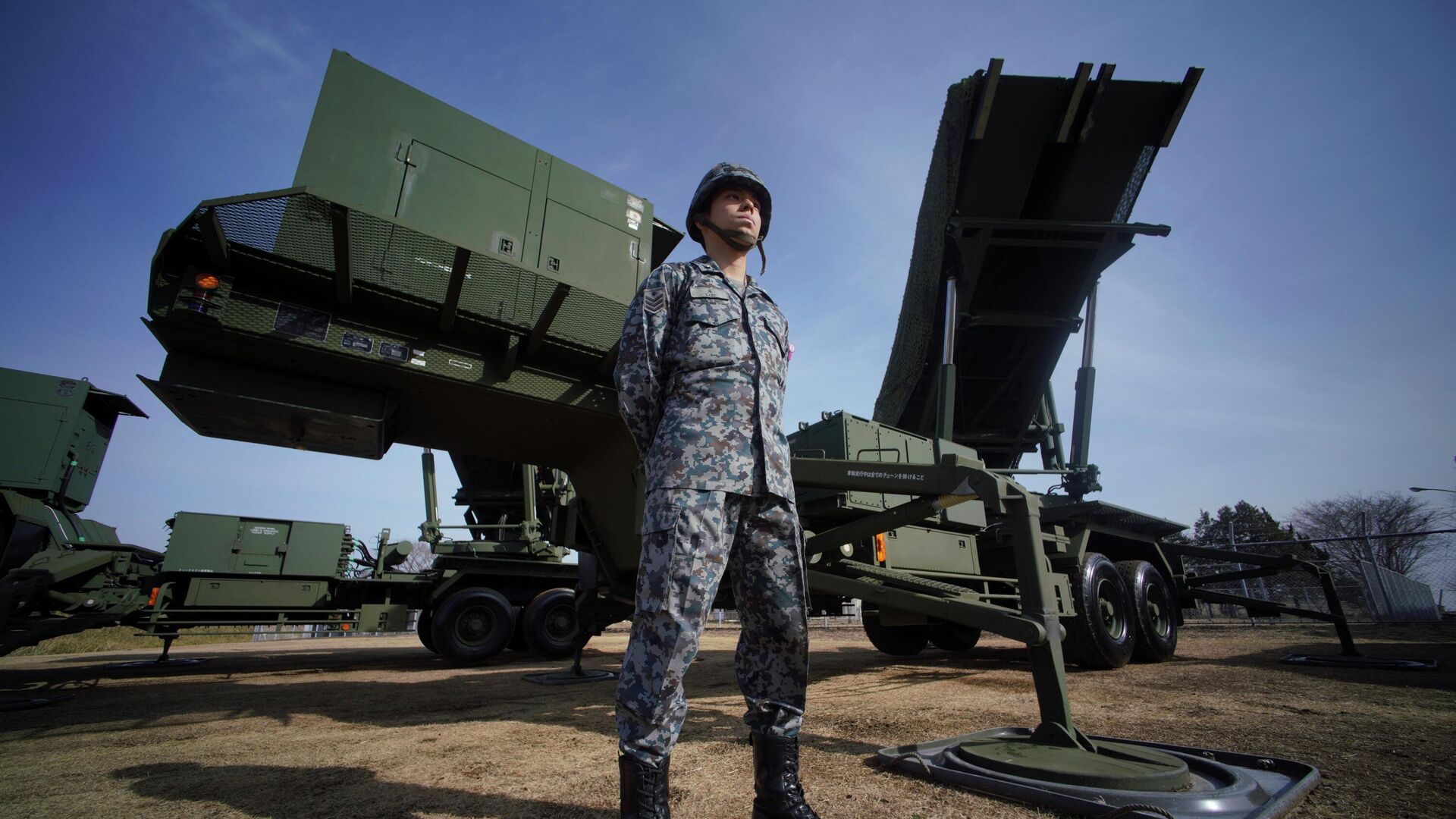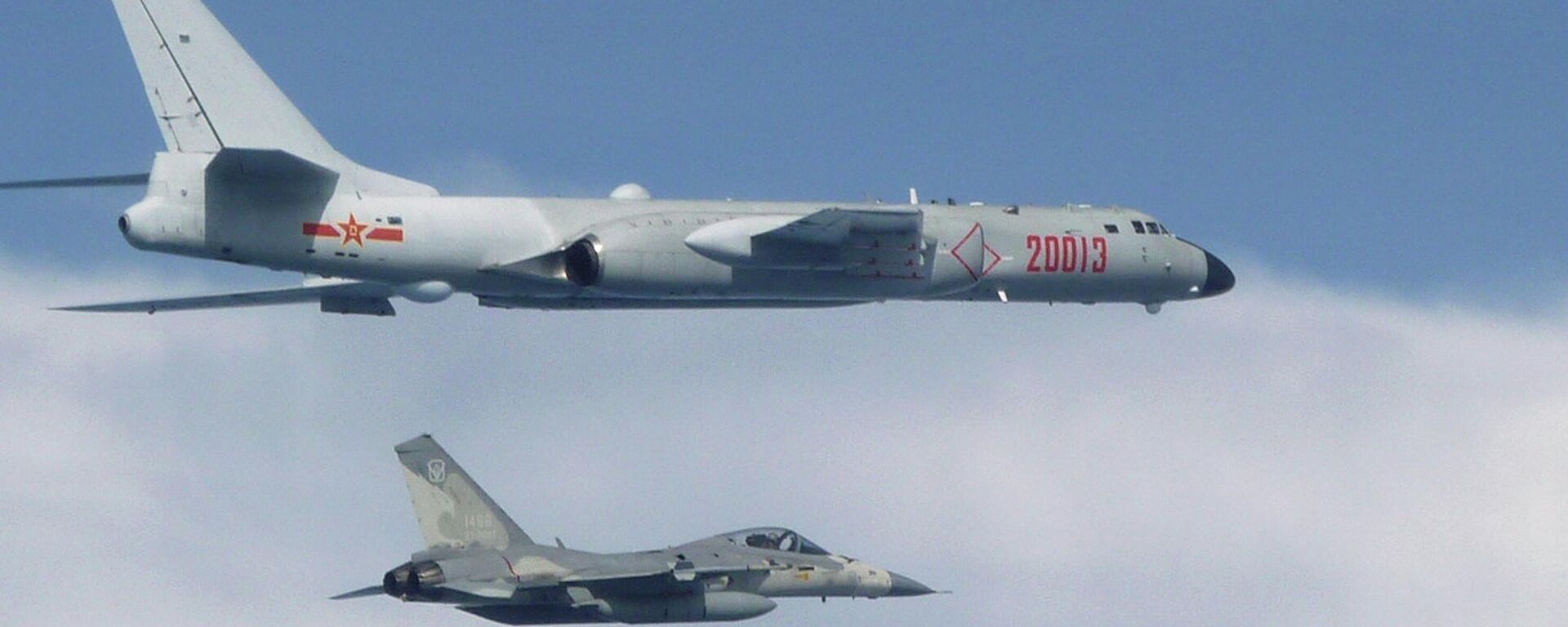https://sputnikglobe.com/20220710/report-us-aims-to-deploy-mid-range-missiles-in-japan-for-integrated-deterrence-against-china-1097139097.html
Report: US Aims to Deploy Mid-Range Missiles in Japan for 'Integrated Deterrence' Against China
Report: US Aims to Deploy Mid-Range Missiles in Japan for 'Integrated Deterrence' Against China
Sputnik International
The US has received numerous warnings from China not to increase its military posture in Asia and the Pacific region. Beijing claims that the military presence... 10.07.2022, Sputnik International
2022-07-10T00:08+0000
2022-07-10T00:08+0000
2022-07-10T00:05+0000
japan
us
military equipment
military & intelligence
missiles
asia
china
https://cdn1.img.sputnikglobe.com/img/07e6/07/09/1097140223_0:0:3000:1688_1920x0_80_0_0_b16893cd00e42675cdb36e209706e95f.jpg
The Japanese military and the US military have discussed putting intermediate-range ballistic missiles on Japan's southwest islands with the goal of achieving "integrated deterrence" against China, the Global Times reported.According to the report, Japanese forces and the US military have been putting pressure on Prime Minister Fumio Kishida's government since 2021 to support Washington's plan to deploy missiles to deter China by bolstering construction of the "first Island chain."An outlet's source reportedly claimed that Washington assembling its Multi-Domain Task Force's (MDTF) ground-based intermediate-range missiles, prioritizing their deployment in the "first island chain," could be a significant security risk for the Asia-Pacific region. Admiral John Aquilino, commander of the US Indo-Pacific Fleet, and Koji Yamazaki, head of the Joint Staff of the Japan Self-Defense Forces, visited the military base construction sites in the southwest islands of Japan in November last year. In a joint statement made following a "2+2" meeting in January 2022, Japan and the US stated the US military and Japanese forces would steadily increase the share of military facilities on Japan's southwest islands.Although the Kishida government has not yet taken a final public decision on such a deployment within the nation, Japan's self-defense forces have reportedly significantly increased preparatory measures for the deployment of US mid-range missiles.The deployment of ground-based intermediate-range missiles does not reportedly require extensive infrastructure at the site, as opposed to the THAAD anti-missile system the US deployed in South Korea. Instead, the MDTF may manufacture the missiles elsewhere and quickly station them in US-Japanese military bases.Furthermore, in early May, the foreign policy head of Japan's ruling Liberal Democratic Party (LDP), Masahisa Sato, stated the country should station surface-launched intermediate-range missiles in the northernmost prefecture of Hokkaido in order to thwart possible missile assaults from China, Russia and North Korea.The planned deployment allegedly agreed between Japan and the US is seen to be detrimental to the region's peace and stability, according to Beijing, and Tokyo will face the brunt of the consequences.Chinese military analyst Song Zhongping told the outlet the placement of land-based mid-range missiles in Japan would gravely jeopardize China's national security and enable the US to expand its influence in the region.According to the expert, once the missiles are used as standard issue weapons, they will unavoidably spark an arms race that will not advance regional peace and stability. Song reportedly said the normal development of relations between Tokyo and Beijing will be seriously threatened, and the region's peace and security will suffer significantly as a result of the Japanese armed forces' risky plot to expand their military with the US in disregard of the security of the Asia-Pacific region. In recent years, as tensions over Taiwan, the South China Sea, and military dominance in the Indo-Pacific region have increased, China has significantly improved its military infrastructure, and its grounds in the area.Chinese warships have been patrolling the waters near Okinawa - where the majority of US forces are stationed in Japan - during the past few years in an effort to purportedly reduce US military hegemony as an extraregional force in the western Pacific, according to reports. Japan has leveraged this perceived Chinese military threat from China to brandish its own. However, at the same time, the US relies on Japan and South Korea, its other major ally in the area, to back efforts to counter China in its pursuit of strengthening its own role in the Asia-Pacific region.
https://sputnikglobe.com/20220610/pla-general-japan-was-first-to-disrupt-east-china-sea-status-quo---not-beijing-1096202249.html
japan
china
Sputnik International
feedback@sputniknews.com
+74956456601
MIA „Rosiya Segodnya“
2022
News
en_EN
Sputnik International
feedback@sputniknews.com
+74956456601
MIA „Rosiya Segodnya“
Sputnik International
feedback@sputniknews.com
+74956456601
MIA „Rosiya Segodnya“
japan, us, military equipment, military & intelligence, missiles, china
japan, us, military equipment, military & intelligence, missiles, china
Report: US Aims to Deploy Mid-Range Missiles in Japan for 'Integrated Deterrence' Against China
Kirill Kurevlev
Managing Editor
The US has received numerous warnings from China not to increase its military posture in Asia and the Pacific region. Beijing claims that the military presence of the US contributes to the unrest in the region, while the Biden administration has increased its cooperation with allies, noting this as one of the main goals in the region.
The Japanese military and the US military have discussed putting intermediate-range ballistic missiles on Japan's southwest islands with the goal of achieving "integrated deterrence" against China, the Global Times
reported.According to the report, Japanese forces and the US military have been putting pressure on Prime Minister Fumio Kishida's government since 2021
to support Washington's plan to deploy missiles to deter China by bolstering construction of the "first Island chain."
An outlet's source reportedly claimed that Washington assembling its Multi-Domain Task Force's (MDTF) ground-based intermediate-range missiles, prioritizing their deployment in the "first island chain," could be a significant security risk for the Asia-Pacific region. Admiral John Aquilino, commander of the US Indo-Pacific Fleet, and Koji Yamazaki, head of the Joint Staff of the Japan Self-Defense Forces, visited the military base construction sites in the southwest islands of Japan in November last year.
In a joint statement made following a
"2+2" meeting in January 2022, Japan and the US stated the US military and Japanese forces would steadily increase the
share of military facilities on Japan's southwest islands.
Although the Kishida government has not yet taken a final public decision on such a deployment within the nation, Japan's self-defense forces have reportedly significantly increased preparatory measures for the deployment of US mid-range missiles.
The deployment of ground-based intermediate-range missiles does not reportedly require extensive infrastructure at the site, as opposed to the THAAD anti-missile system the US deployed in South Korea. Instead, the MDTF may manufacture the missiles elsewhere and quickly station them in US-Japanese military bases.
Furthermore, in early May, the foreign policy head of Japan's ruling Liberal Democratic Party (LDP), Masahisa Sato,
stated the country should station surface-launched intermediate-range missiles in the northernmost prefecture of Hokkaido in order to thwart possible missile assaults from China, Russia and North Korea.
The planned deployment allegedly agreed between Japan and the US is seen to be detrimental to the region's peace and stability, according to Beijing, and Tokyo will face the brunt of the consequences.
Chinese military analyst Song Zhongping told the outlet the placement of land-based mid-range missiles in Japan would gravely jeopardize China's national security and enable the US to expand its influence in the region.
According to the expert, once the missiles are used as standard issue weapons, they will unavoidably spark an arms race that will not advance regional peace and stability.
Song reportedly said the normal development of relations between Tokyo and Beijing will be seriously threatened, and the region's peace and security will suffer significantly as a result of the Japanese armed forces' risky plot to expand their military with the US in disregard of the security of the Asia-Pacific region.
In recent years, as tensions over Taiwan, the South China Sea, and military dominance in the Indo-Pacific region have increased, China has significantly improved its military infrastructure, and its grounds in the area.
Chinese warships
have been patrolling the waters near Okinawa - where the majority of US forces are stationed in Japan - during the past few years in an effort to purportedly reduce
US military hegemony as an extraregional force in the western Pacific, according to reports. Japan has leveraged this perceived Chinese military threat from China to
brandish its own. However, at the same time, the US relies on Japan and South Korea, its other major ally in the area, to back efforts to counter China in its pursuit of strengthening its own role in the Asia-Pacific region.





